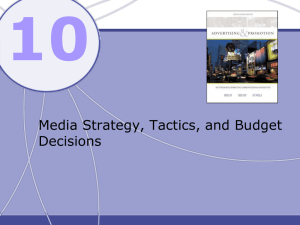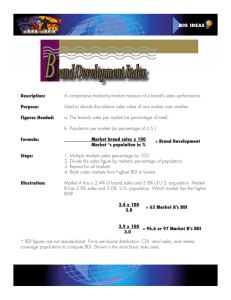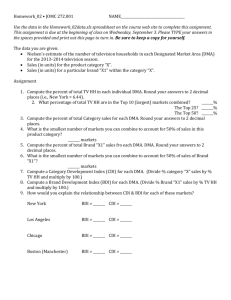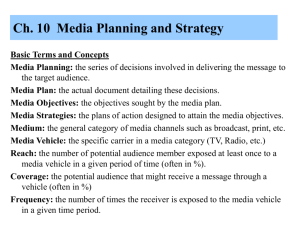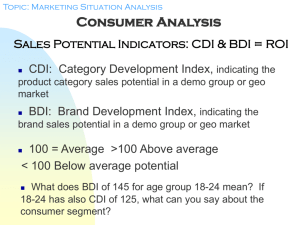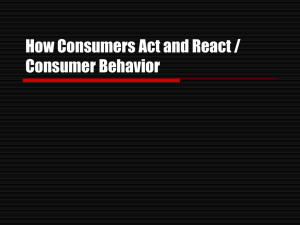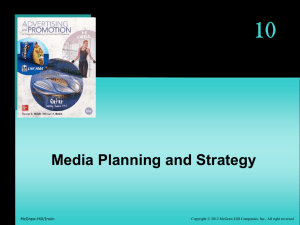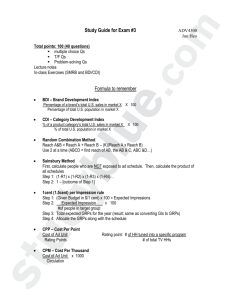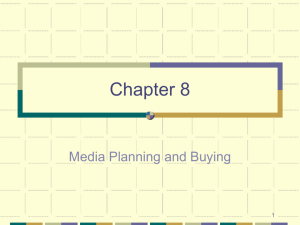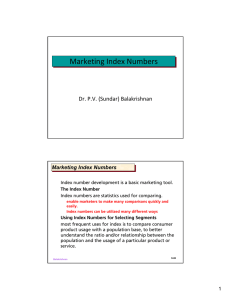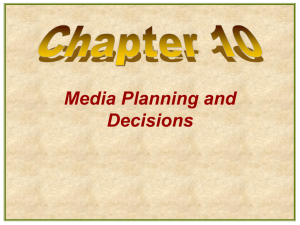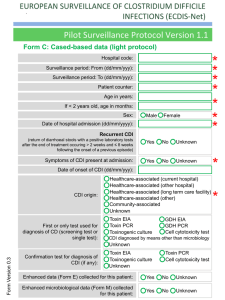Lecture 5 - WordPress.com
advertisement
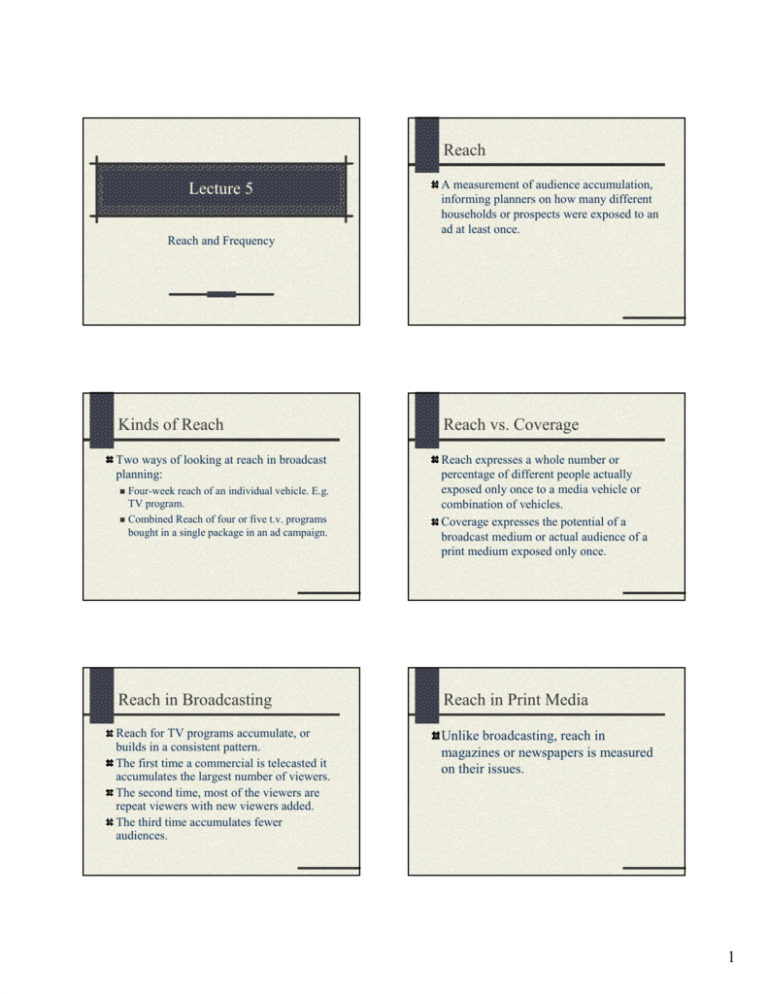
Reach Lecture 5 A measurement of audience accumulation, informing planners on how many different households or prospects were exposed to an ad at least once. Reach and Frequency Kinds of Reach Reach vs. Coverage Two ways of looking at reach in broadcast planning: Reach expresses a whole number or percentage of different people actually exposed only once to a media vehicle or combination of vehicles. Coverage expresses the potential of a broadcast medium or actual audience of a print medium exposed only once. Four-week reach of an individual vehicle. E.g. TV program. Combined Reach of four or five t.v. programs bought in a single package in an ad campaign. Reach in Broadcasting Reach in Print Media Reach for TV programs accumulate, or builds in a consistent pattern. The first time a commercial is telecasted it accumulates the largest number of viewers. The second time, most of the viewers are repeat viewers with new viewers added. The third time accumulates fewer audiences. Unlike broadcasting, reach in magazines or newspapers is measured on their issues. 1 Frequency Calculating Frequency Tells the average number of times that audience members were exposed to a broadcast program within a four-week period or were exposed to issues of different print media. GRP = Rating x Number of telecasts or issues Frequency = GRP / Reach For E.g. GRP = 29.5 x 6 = 177 Reach = 54 Frequency = 177/54 = 3.3 Where Reach is a measure of dispersion, Frequency is a measure of repetition. Relationship of Reach & Frequency Effective Frequency Occur at the same time, different rates in an inverse relationship. Amount of frequency the planner thinks is necessary for advertisements to be effective in communicating the message. For e.g. 50 reach and 3.0 frequency yields 100 GRP. If these GRPs were obtained in a different media mix, it will result in a higher reach and lower frequency or visa versa. Reach X Frequency = GRP Effective Reach Other Terms of Measure Upon deciding the effective frequency, the planner needs to determine the effective reach; I.e percentage of target audience at the most effective frequency level. Continuity – Consistency of advertising placement Weighting – Concentration or focus required to ensure that the message is delivered 2 Sales Analysis BDI vs. CDI Gathering data about the sales of volume of a brand and its competitors. Tools involved are; BDI and CDI share an inverse relationship When the BDI is high and CDI is low, it indicates that the market share is a high. Inversely if the CDI is high and the BDI is low, then that results in a low market share. Heavy-user Data: Percentage of repetitive users. Brand Development Index (BDI): measures the no of cases, units or dollar volume of a brand sold per 1000 population BDI = % of a brand’s total sales in market A % of total population in market A Category Development Index (CDI): based on the percentage of sales of a product category rather than brand in a given market CDI= % of a category sales in market A % of total population in market A Cutoff Points In selecting markets for advertising, it is often difficult to judge at which point to drop markets at the bottom of the list. The place at which the list is divided is called the cutoff point. 3
